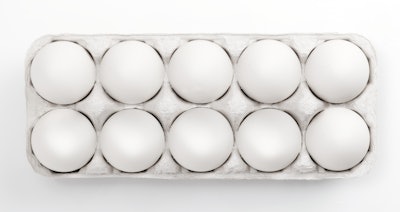
Highly pathogenic avian influenza (HPAI) has significantly affected egg prices and supply in the U.S. Over 20 million commercial layers in the country have been affected by the disease this year, with the most recent occurrence being a farm of approximately 2 million hens affected in the state of Nebraska.
Rising egg prices came under the spotlight when Egg Industry Insight spoke to Egg Unlimited’s global trade strategist Brian Moscogiuri.
Egg prices and HPAI
“As far as prices, I’ve seen Midwest large eggs, the benchmark price in the industry, quoting at over US$3.00 per dozen. This is only the second time in history we’ve broken that threshold,” Moscogiui said. “In 2015, we reached US$2.88 per dozen.”
“While shell egg prices have surged more than 107% in the last three weeks compared to the expected 30% for this time of year, the market has been declining since the Easter demand peak.”
He continued that this year HPAI is ahead of the curve in terms of when and how many birds are being lost compared to how the 2015 outbreak progressed. And now we have Easter that has fallen in the middle of these bird losses.
“In 2015’s HPAI breakout, commercial layers were affected after the Easter holiday. This year, because commercial layers were affected approximately one month before the egg-based holiday, the market is being challenged by strong demand,” Moscogiuri explained.
Additionally, HPAI outbreaks are more widespread the U.S. than in 2015. This year we’re finding avian influenza in wild birds, turkeys, commercial boilers and commercial layer hens across all four North American flyways, even with advanced biosecurity measures.
Shell eggs and egg products shortages?
Because producers were preparing to build their inventories during the time period building up to Easter anyways, Moscogiuri suspects that shell egg shortages are not as severe as they could be.
“I think retailers want to warn the consumers of an egg shortage just in case it gets to that point. We're starting to see ‘potential shortage and higher prices’ signage at the shelves, similar to what we saw in 2015,” he said.
Where more shortages are suspected is in egg products. Inline facilities have been affected by HPAI and egg processing capabilities have been limited, meaning that affected companies have not only lost hens, but they've lost the ability to process eggs through their machines. Additionally, this scarcity impacts the supply of other foods that utilize egg products as an ingredient.
“That’s where we are seeing shortages now versus retail. There could still potentially be shortages of shell eggs if this situation continues,” Moscogiuri concluded.


















